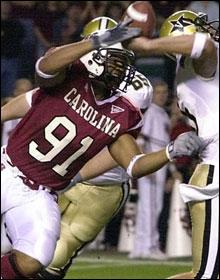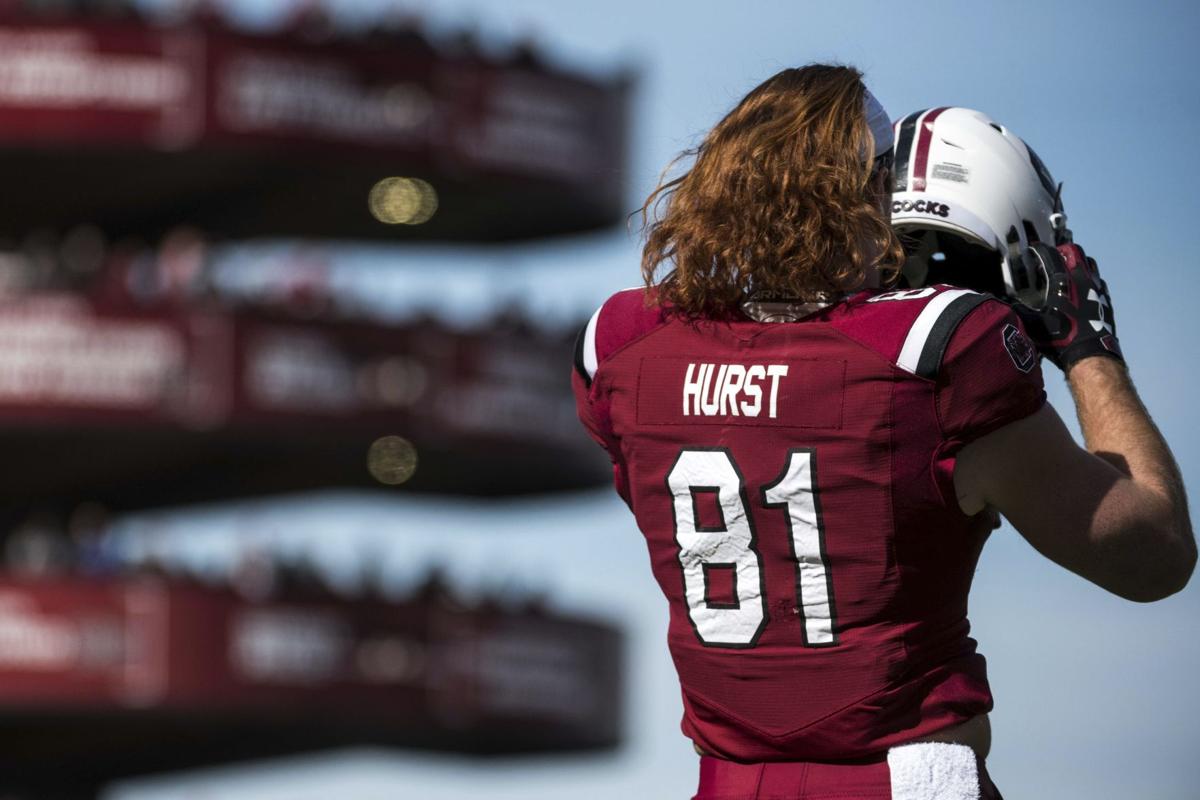Correct. I was one off but knew we couldn't still be at 84. A simple google "how many days until Sept 4" gave me 82. Let's go with that.Sept 4th is kickoff. 17 days left in June counting today. 31 in July and August and 3 in Sept. 17+31+31+3 = 82. Does that seem correct?
Gamecock Fanatics
You are using an out of date browser. It may not display this or other websites correctly.
You should upgrade or use an alternative browser.
You should upgrade or use an alternative browser.
Countdown to Kickoff
- Thread starter Swayin
- Start date
Homebrewcock
GCF Top Poster
Duh. I should have done that instead of looking at the calendar. 
Homebrewcock
GCF Top Poster
Homebrewcock
GCF Top Poster
I was out of town over the weekend, so will grab a lifeline off of your post.
Sterling Sharpe. #84 Green Bay Packers.

Another lifeline. Can't believe no one posted this.
USS Houston, CL-81.
In the Battle of Formosa, the US naval air force did much to destroy Japanese bases for the island battles still to come. Japanese forces retaliated with heavy and repeated land-based air attacks. Houston splashed about four aircraft in one attack on 12 October, and helped repel another attack next day, in which USS Canberra was hit by an aerial torpedo. Taking Canberra's old station on 14 October, Houston and other ships encountered another heavy air raid. Her gunners shot down three of the attacking torpedo bombers, but a fourth's torpedo hit her engine room, causing the loss of propulsive power. Captain Behrens requested a tow, which was undertaken by Boston.[3]
By midnight, both Canberra and Houston were under tow toward Ulithi for repairs. Pawnee – a fleet tug – assumed the tow on 16 October. Late that afternoon, one of the Japanese torpedo plane strikes from Formosa, still trying to sink the cruiser, struck Houston directly on her stern from the rear. This flooded the hangar for Houston's scout planes.
Evacuating all surplus sailors to the escorting ships, Captain Behrens and his damage control officer, with the aid of Houston's Executive Officer, Captain Clarence J. Broussard, kept the damage control parties working, and they managed to keep Houston afloat, traveling slowly toward Ulithi. Captain Broussard was later awarded the Silver Star for his actions. Learning that the Japanese believed "Cripple Division I" – as it was called – was the remnants of Task Force 38 (TF 38), Admiral William F. Halsey hoped to lure them into an attack on the two damaged cruisers.[3]
Part of the Japanese fleet did sortie from the Inland Sea, Japanese home islands, but after an air attack, their commanders evidently thought better of the idea, and then retired back to port. Houston and Canberra were shortly out of range of Japanese land-based air power, and they arrived at Ulithi on 27 October. After temporary repairs, Houston then proceeded to Manus Island, where she headed for a floating dry dock to begin repairs. She arrived there on 20 December, and eventually steamed first to Pearl Harbor then to New York Navy Yard, as there was insufficient repair capacity available on the West Coast due to the large number of ships already undergoing repairs and overhauls. She arrived in New York on 24 March 1945.[3]
,_during_the_afternoon_of_16_October_1944_(NH_98826).jpg)
_underway_off_Norfolk_on_12_January_1944_(80-G-214200).jpg)
In the Battle of Formosa, the US naval air force did much to destroy Japanese bases for the island battles still to come. Japanese forces retaliated with heavy and repeated land-based air attacks. Houston splashed about four aircraft in one attack on 12 October, and helped repel another attack next day, in which USS Canberra was hit by an aerial torpedo. Taking Canberra's old station on 14 October, Houston and other ships encountered another heavy air raid. Her gunners shot down three of the attacking torpedo bombers, but a fourth's torpedo hit her engine room, causing the loss of propulsive power. Captain Behrens requested a tow, which was undertaken by Boston.[3]
By midnight, both Canberra and Houston were under tow toward Ulithi for repairs. Pawnee – a fleet tug – assumed the tow on 16 October. Late that afternoon, one of the Japanese torpedo plane strikes from Formosa, still trying to sink the cruiser, struck Houston directly on her stern from the rear. This flooded the hangar for Houston's scout planes.
Evacuating all surplus sailors to the escorting ships, Captain Behrens and his damage control officer, with the aid of Houston's Executive Officer, Captain Clarence J. Broussard, kept the damage control parties working, and they managed to keep Houston afloat, traveling slowly toward Ulithi. Captain Broussard was later awarded the Silver Star for his actions. Learning that the Japanese believed "Cripple Division I" – as it was called – was the remnants of Task Force 38 (TF 38), Admiral William F. Halsey hoped to lure them into an attack on the two damaged cruisers.[3]
Part of the Japanese fleet did sortie from the Inland Sea, Japanese home islands, but after an air attack, their commanders evidently thought better of the idea, and then retired back to port. Houston and Canberra were shortly out of range of Japanese land-based air power, and they arrived at Ulithi on 27 October. After temporary repairs, Houston then proceeded to Manus Island, where she headed for a floating dry dock to begin repairs. She arrived there on 20 December, and eventually steamed first to Pearl Harbor then to New York Navy Yard, as there was insufficient repair capacity available on the West Coast due to the large number of ships already undergoing repairs and overhauls. She arrived in New York on 24 March 1945.[3]
,_during_the_afternoon_of_16_October_1944_(NH_98826).jpg)
_underway_off_Norfolk_on_12_January_1944_(80-G-214200).jpg)
Homebrewcock
GCF Top Poster
Moe Thompson - Good and bad moments for sure.







_underway_in_the_Mediterranean_Sea,_circa_in_1948_(80-G-343435).jpg/1280px-USS_Providence_(CL-82)_underway_in_the_Mediterranean_Sea,_circa_in_1948_(80-G-343435).jpg)






:format(jpeg)/cdn.vox-cdn.com/uploads/chorus_image/image/32364121/185975421.0.jpg)



